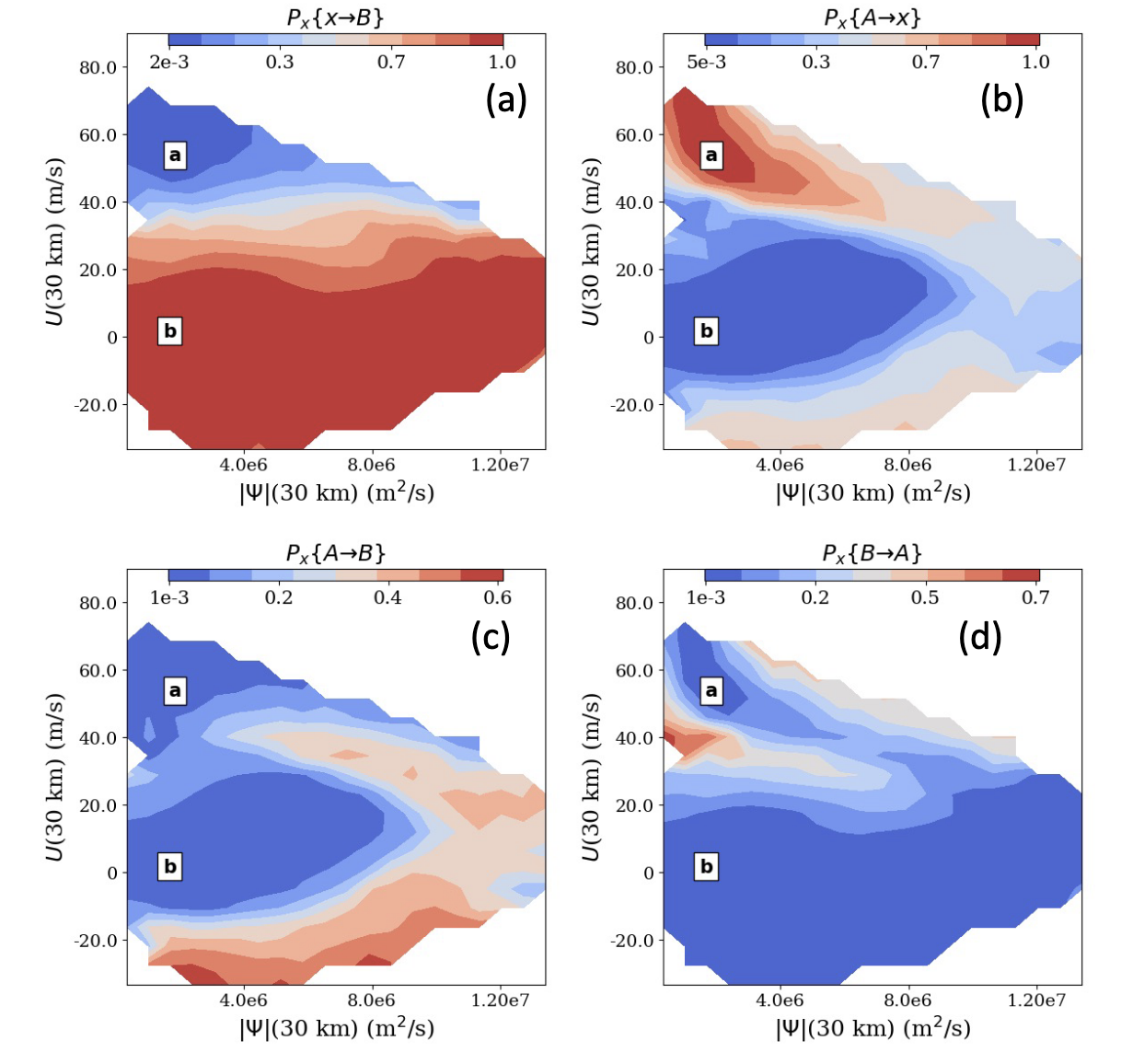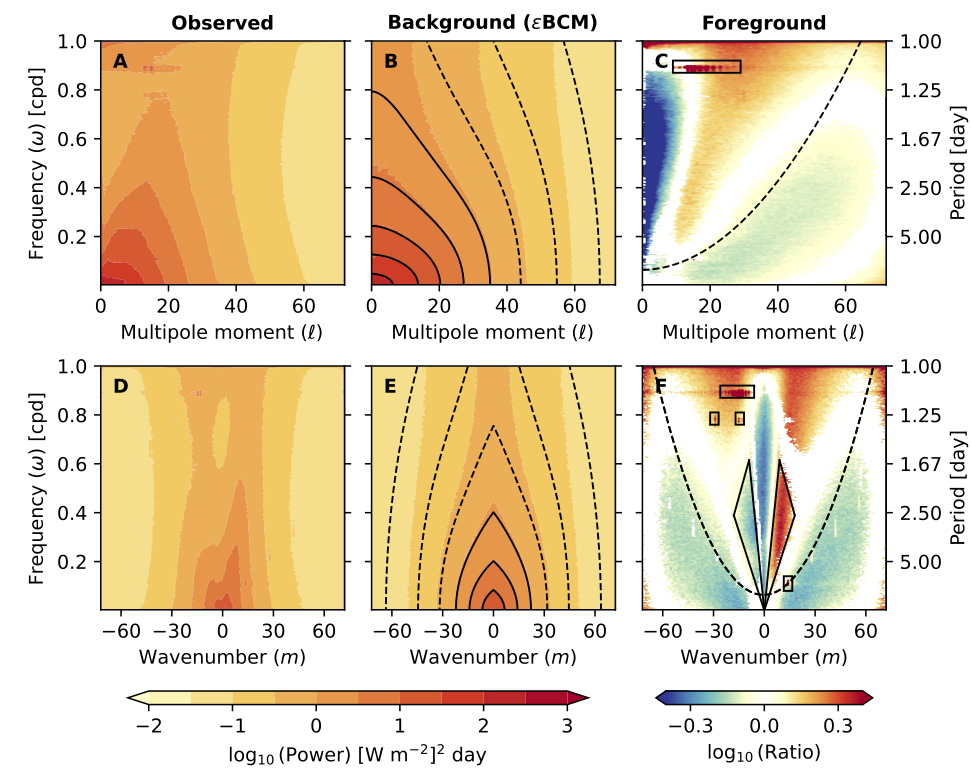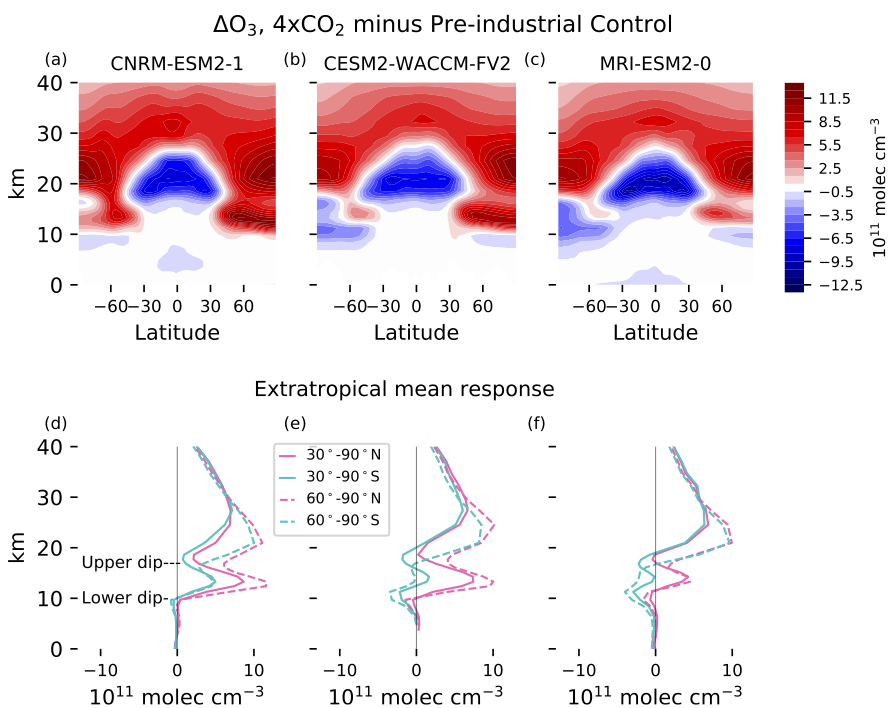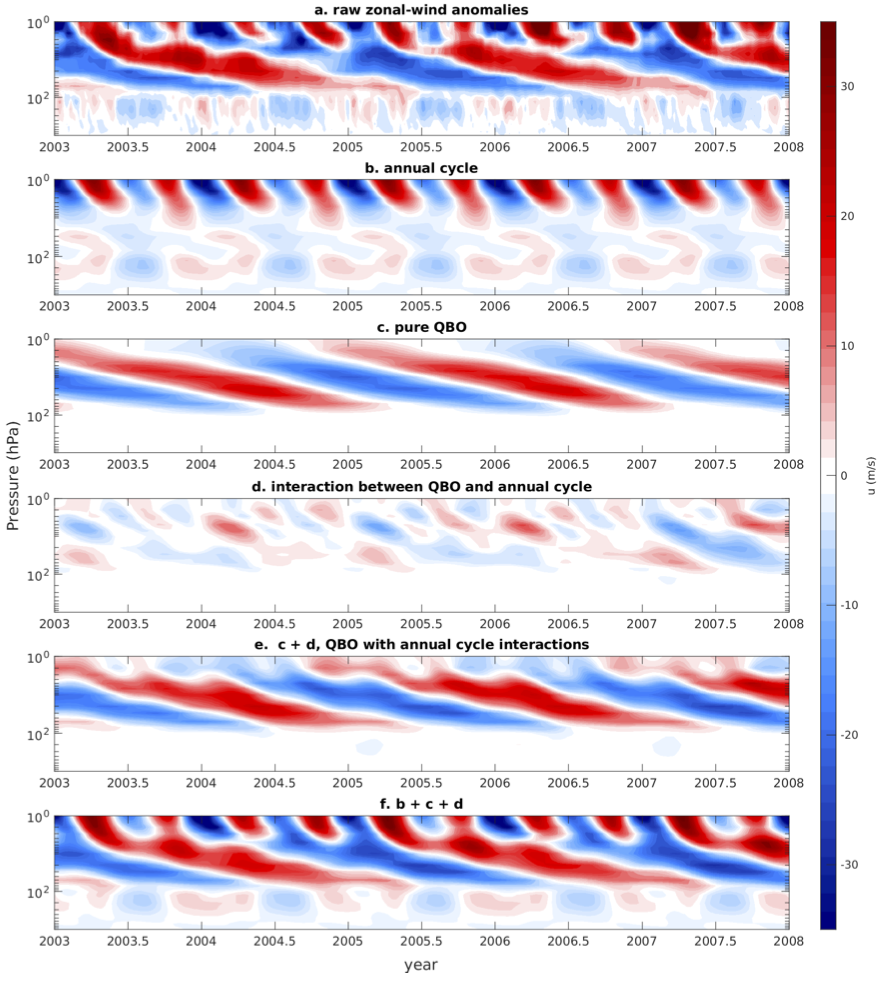Transition Path Theory: A framework to explore rare events in the atmospheric circulation!
Published:
To conserve the number of papers in my queue, Justin Finkel submitted a new manuscript just as our MWR paper was accepted. Exploring stratospheric rare events with transition path theory and short simulations, submitted to the Journal of the Atmospheric Sciences, takes a deeper dive into the idealized Holton and Mass (1976) model of Sudden Stratospheric Warming events using Transition Path Theory, TPT for short.

The paper builds on first paper, exploring more TPT metrics to characterize rare transitions from the strong and weak vortex states of the Holton and Mass model. The committor, forward and backward lead times, and reactive densities and currents provide a comprehensive description of the transitions betwen these two attracting states in phase space. The Dynamic Galerkin Approximation (DGA) method allows us to construct this picture based on a larger number of short simulations, simulations that are orders of magnitude shorter than the return time between transitions, and even short relative to the time scale of transitions themselves. TPT has been used more extensively in chemistry, but a growing number of papers are showing that it can help us understand the Earth system as well.




